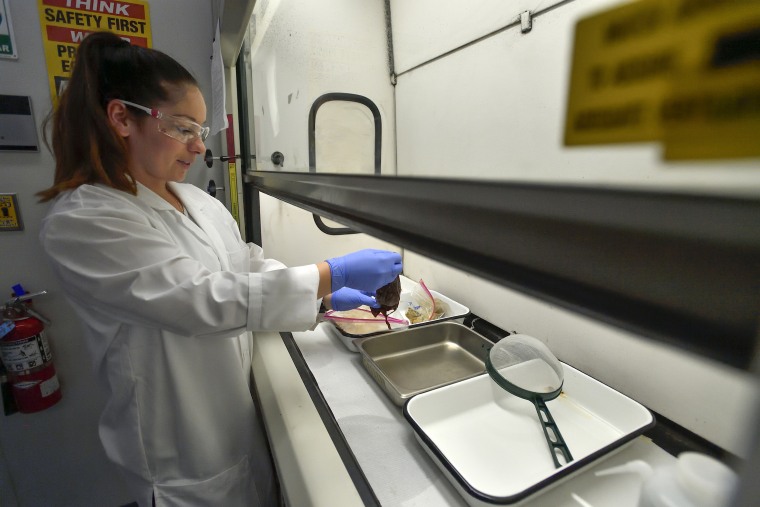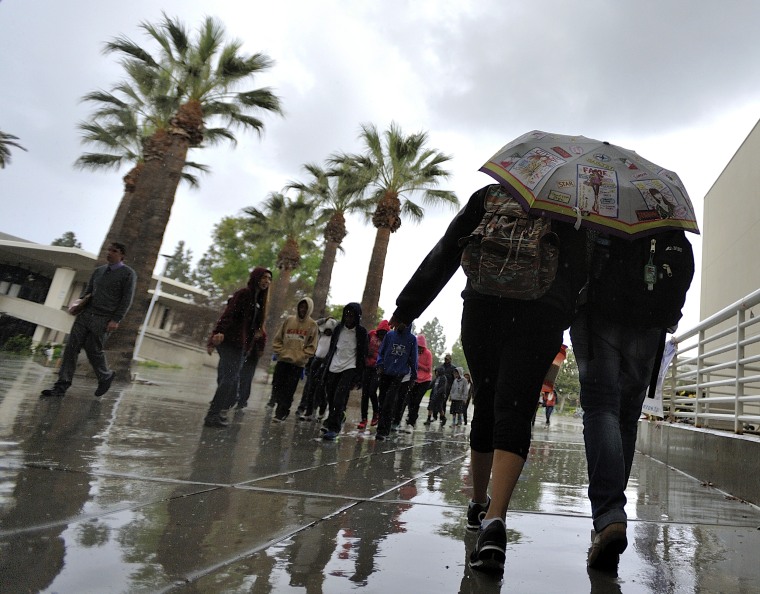This article about graduate enrollment was produced by The Hechinger Report, a nonprofit, independent news organization focused on inequality and innovation in education.
It hasn’t been long — just five years — since so many engineering students were flocking to California State University, Fullerton, that the university’s College of Engineering and Computer Science was bursting at the seams.
There were more than 1,300 graduate students from around the world enrolled then, according to university figures.
Today, the college has 759.
The lion’s share of the decline? A drop in international engineering students deciding to come to Southern California, college Dean Susamma Barua said.
And that was before the coronavirus threw higher education into chaos.
Until recently, graduate students had generally remained a bright spot in higher education, continuing to show up at colleges and universities and helping institutions balance their books even as undergraduate enrollment dramatically declined.
But even before the pandemic, there were signs that the once-reliable flow of graduate students and the money they bring with them was beginning to slow. And now, when that money may be needed the most, school leaders and researchers fear that these numbers could plummet.
That can only worsen the predicted financial crunch for colleges and universities, as fewer undergraduates are expected on campus this fall, and schools face state budget cuts and endowment losses.
Full coverage of the coronavirus outbreak
The biggest question is whether students from abroad will risk coming to the United States. While that’s a problem at all levels of higher education, it has much more of an impact on graduate programs, where international students make up 13 percent of the enrollment, compared to less than 3 percent of undergrads.
“If you took the international students out, some of those programs would halve in size, or worse, and the revenue also is obviously critical,” said Richard Garrett, chief research officer at the consulting firm Eduventures.
Related: Already stretched universities now face tens of billions in endowment losses
The pandemic has restricted travel and closed consulates that process student visas. Garrett also expects international skepticism about the American response to the crisis to keep potential students away — especially from China, the biggest source of graduate students, with which there are also growing geopolitical tensions.
International students may be concerned about traveling to the U.S. only to end up having to take classes online — already, this week, the California State University System announced that it will teach online and not in person in the fall — or that their home countries may not evacuate them in the event of a new outbreak.
“It’s one thing to persuade an American student to study locally or maybe cross a state line, but for an international student, the U.S. does not look good in terms of its management of the pandemic,” Garrett said.
Meanwhile, four Republican senators have urged the Trump administration to suspend the ability of international students who graduate from U.S. universities to apply to stay in the United States and work for up to three years — a big incentive for them to come to the country in the first place.
Some 223,000 international graduates had their time in the U.S. extended last year under the program.
“There is certainly no reason to allow foreign students to stay for three additional years just to take jobs that would otherwise go to unemployed Americans as our economy recovers,” the senators wrote.
So great is the concern about international enrollment that 63 higher education organizations have urged the administration to prioritize student visa applications whenever consulates reopen.
Even before the pandemic, new international student enrollment was already falling after years of uninterrupted increase, according to the Institute of International Education, dropping more than 10 percent since the 2015-2016 academic year — a period that began with the contentious presidential election, restrictions on immigration and intensifying competition for students from Australia, Canada and other countries.
That’s been part of a larger trend alarming graduate programs.
Related: Universities increasingly turn to graduate programs to balance their books
Loyola University Chicago had 3,331 master’s students in 2015, but just under 2,800 this year. Also in Chicago, the Illinois Institute of Technology had about 4,800 graduate students in 2015, compared to 3,371 this year. The University of Massachusetts Boston reached a peak of 4,081 graduate students in 2015, but now has 3,394.
Top officials at Loyola and UMass Boston declined to discuss the problem. The Illinois Institute of Technology did not respond to interview requests.
The most elite American research universities haven’t seen the same worrying trends — Stanford University’s master’s enrollment, for example, has remained relatively steady since 2010. Elite schools actually saw an increase last year in international graduate students, according to the Council of Graduate Schools.
But second-tier universities and colleges suffered a third consecutive year of declines in international graduate enrollment.
These universities, especially the ones that focus more on master’s degrees than doctorates and whose campuses are in the middle of the country, are trying to figure out how to stop the bleeding.
In Ohio, for example, Cleveland State, Kent State and Miami universities have all lost master’s enrollment since 2015, according to student data from those schools.
Related: Already stretched grad students rebel against rising and often surreptitious fees
A long period of rising prices for graduate education — especially in the form of escalating fees — is likely contributing to the enrollment declines. The net cost of graduate school has been increasing faster than the net cost of undergraduate programs, according to the Urban Institute. One result of this is that each graduate student now owes four times more, on average, than the average undergraduate, the College Board reports.

For Cal State Fullerton, the challenges are clear, said Barua, the engineering and computer science dean. Engineering programs were thriving, with students coming to the U.S. from India and China, she said, but Barua thinks those students have become fed up with U.S. immigration restrictions and have been increasingly turning to universities in Canada and Australia; statistics show that while the flow of international students to the U.S. has slowed, the number has grown by double digits in Australia, for example. Travel restrictions to combat the coronavirus pandemic — and economic reversals and fears stemming from it — may only make this worse.
The university has previously not really promoted itself to international students, relying instead on word of mouth, Barua said, but it is now considering more outreach to India and China.
“Sometimes a one-on-one conversation makes all the difference,” she said.
Related: Canceled research, sports, recitals — college students are coping with more than closed campuses
It’s the economy that is most likely to dictate how graduate schools weather this new storm, administrators and others said.
In bad economic times, people have historically decided to go back to school. The pandemic-fueled shift to online education that undergraduates dislike could appeal to older students more interested in graduate programs, who have families and jobs and need the flexibility, Garrett of Eduventures said.
Download the NBC News app for full coverage and alerts about the coronavirus outbreak
Companies will continue to need highly educated workers, and it will be up to universities to provide them, said Bernard Mair, a senior vice president at the Association of Public and Land-grant Universities.
Institutions should concentrate less on recruiting recent college graduates and more on older students, he said.
“Universities need to focus on lifelong learning,” Mair said. “They need to reskill and upskill.”
Related: Online higher education isn’t winning over students forced off campus by the coronavirus
Another bright spot: While there’s been a demographic bust in the number of 18- to 24-year-olds, Garrett said, “we’re in the middle of a demographic boom in 25- to 34-year-olds that are the core graduate student.”
On the downside, there is a lot more competition than there was in the last recession, such as coding bootcamps and lower-priced options offered by Coursera, LinkedIn Learning and others.
Concerned about the declines suffered by some of its peers, Marquette University in Milwaukee set up an “incubator” to quickly launch new graduate programs, said Doug Woods, the vice provost. The initiative has helped start nursing, clinical health, data analytics and supply chain management programs, he said.
Marquette has also created accelerated graduate programs that allow students to complete a graduate degree in less time than usual.
“We just have kind of a spirit of innovation right now,” Woods said.
Sign up for The Hechinger Report’s newsletter.
